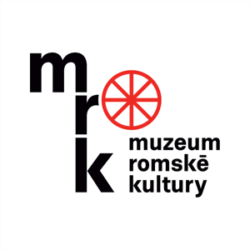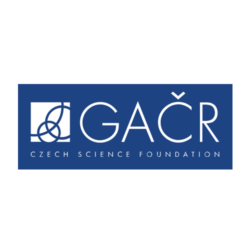Vlasta Danielová
Alžběta Danielová, née Serynková, 1924, Pilsen
-
Testimony abstract
Alžběta Danielová was born in 1924 in Pilsen and grew up in a house at Orlík in the town of Třemošná . Her father was not Romani, and her mother's name was Marie Serynková. She grew up with two brothers, completed about 5 grades at the local school and from the age of 14 worked in a brickworks in nearby Horní Bříza.
When Danielová was 16 years old, she moved with her mother and brothers, plus a little sister, to an apartment on Jateční Street in the Doubravka district of Pilsen. In 1942, the entire extended family, including her grandmother and her mother's four sisters, were taken by the Germans.[1] They thought they were going for work. When they were taken away, people cried. They were photographed and fingerprinted on the Denis Embankment in Pilsen, then they were in the school building on Jirásek Square, after which they were taken by freight train to Písek, where they walked to the camp at Lety u Písku.
In the camp there was a wake-up call at 5 o'clock, when they were given black coffee and a slice of bread and taken by lorries to a farm where they helped out until it went dark at 7 or 8 o'clock in the evening; then they were taken back to the camp, where they were given soup and a piece of bread. Working on the farm was advantageous in that they had access to food other than "camp" food. After a while, they were allowed to sleep in the barns after work to save the trouble of transporting prisoners.
Danielová recalled the constant fear and people’s complaints and said the Czech guards in the camp were often worse than the Germans. If someone had a dirty cup, for example, they would break it over his head. They were punished by beatings or being made to go hungry for several days, or they were locked in a so-called bunker, a modified wagon without windows. Danielová's brother tried to escape, and they hung him by his arms from a pole for 24 hours. Prisoners were dying in the camp, and the guards killed adults and even small children, hitting them and leaving them lying on the ground. The dead were then loaded onto trucks by the prisoners and buried in a large pit, not in a grave. Danielová also mentioned the death of her little sister in this context.[2]
Alžběta Danielová's 90-year-old grandmother and mother, as well as her mother's four sisters, were then taken from Lety to Auschwitz, she said, and she never saw them again. She herself was transported there after eight months,[3]
then went through the camp at Ravensbrück. As a member of a labour commando, she lived to see the liberation by the Red Army at Wittenberg.[4]
After the war Danielová returned to her native Pilsen.
How to cite abstract
Abstract of testimony from: HORVÁTHOVÁ, Jana a kol. ... to jsou těžké vzpomínky. 1. svazek. Vzpomínky Romů a Sintů na život před válkou a v protektorátu. Brno: Větrné mlýny, Muzeum romské kultury, 2021, 166-167, 309, 663-686. Testimonies of the Roma and Sinti. Project of the Prague Forum for Romani Histories, https://www.romatestimonies.com/testimony/vlasta-danielova-2 (accessed 4/19/2025) -
Origin of Testimony
Alžběta Danielová's testimony comes from several sources: primarily from an interview conducted in Czech and recorded on 2 March 1995 in Pilsen, the audio recording of which is in the collections of the Museum of Romani Culture (MRC) and is available online at the website of the United States Holocaust Memorial Museum. Another source is a testimony by Alžbieta Daniela in 1987, printed in Ctibor Nečas's book Nemůžeme zapomenout - našťi bisteras (We cannot forget - našťi bisteras). Reference is also made to the Research Report of 2 March 1995 from Pilsen and to Paul Polansky's book Black Silence.
The memories are supplemented by six photographs: an archival photograph from the collections of the Institute of Ethnology of the CAS probably shows Alžběta Danielová, then Serynková, with a fellow prisoner and a worker from the camp kitchen in Lety u Písku, the remaining photographs are from the MRC collections. These are two post-war portraits of Alžběta Danielová, a photograph from the 1960s or 1970s of her with her husband Otakar and children, a photograph taken by Jana Horváthová during the filming of the interview in 1995, and a photograph of the AGPI pig farm at Lety u Písku from 2018 by Adam Holubovský.
-
Where to find this testimony




